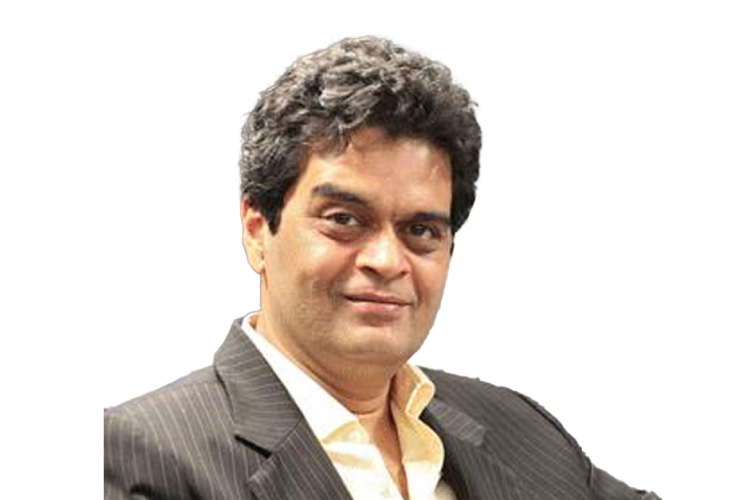BARC was the outcome of a project, dating back to 2006, to build a joint industry body for television measurement. The new ratings, launched in April 2017, were the culmination of over 11 years of work. To build consensus amongst three industry groups: broadcasters, advertisers and advertising agencies, and then fund the sizeable capital investments and revenue outlays that the system requires, year after year.
It has been a journey fraught with perils and missteps. Genres have demanded rating pauses, management has been accused of criminal misdemeanour, industry mischief has required complex analytical responses. In the meantime, the system continues to produce TV audience measurement like clockwork, every Thursday morning, which immediately gets minutely scrutinised and commented upon, and catalyses thousands of action points across hundreds of broadcasters.
Nobody can now say, with a straight face, that the BARC system has failed. It performs all the roles expected out of a currency system. It is medium of exchange. Most advertising sales deals, for TV advertising time, are based on valuations built on BARC measurement. It would be safe to assume that even large capital transactions, like the Rs. 13,500 crore deal between James Murdoch and Uday Shankar’s Lupa Systems and Mukesh Ambani’s Viacom18, have used BARC data as a critical component of the valuation exercise. In this, it performs a role as ‘store of value’. Finally, it provides a broadcaster-agnostic basis of comparison on which the relative strengths and weaknesses of different participants can be assessed.
Even the best measurement systems face challenges; some caused by a dynamic, or volatile, environment, others of a more intrinsic nature. What separates wheat from chaff is how a particular system is able to bounce back from adversity.
News ratings were on a painfully long hiatus, from October 2020 to March 2022. When BARC started publishing them again, it used a new reporting standard: the 4-week moving average. For clarity, this is the weighted average number for the four weeks ending the reporting week. The latest report was for week 21, 2022. The news ratings therein are the weighted average numbers for the period weeks 18 through 21. The previous week was the weighted average for weeks 17 through 20 and the following week will report the weighted average for weeks 19 to 22.
A shift like this demands a major analytical reset across a hundred news channel content and ad sales teams. It was never going to be easy. What makes it doubly hard is the nearly 1½ year break, during which the news genre has been through a fierce battle for leadership, between legacy players and newcomers.
Ground reports offer dramatic detail on how the news networks’ aggressive tone and manner, often seen on primetime news bulletins and studio debates, has bled into bareknuckle battles for dominating distribution platforms and, by implication, consumer viewing habits. Broadcasting has long chanted the aphorism, “Content is King. But Distribution is God”. The ferocity we have been witnessing is, in that sense, for Divine Omnipresence. While legacy players may have been content with protecting their availability, the feisty challengers appear to have gone beyond, weaponising Distribution for Offence, not ring-fencing it for Defence.
This puts BARC in an unenviable, awkward spot. It can do little, or nothing, to ask errant players to cease and desist. And it would be tampering with data if it began to make subjective choices about what must go into audience aggregates, and what must be edited out. Indeed, that was the very genesis of the debacles of 2020.
Even today, BARB-UK, the Broadcasters’ Audience Research Bureau, is the gold standard of television measurement, to which many ratings providers around the world benchmark themselves. The singularly noteworthy feature of BARB’s way of working is the close and continuous involvement of all its stakeholders in the technical and analytical oversight of the research program. This has two big legs. On the one hand, BARB runs a continuous Establishment Study, which picks up a 1000 randomly selected homes every week. On the other, BARB manages and reports from a peoplemeter household panel comprising 5300 homes from across the UK. BARB’s various committees are involved every time the smallest change or alternation becomes necessary for maintaining reliability, robustness and, above all, integrity. Major broadcast networks and media agencies have full-time employees whose solitary assignment is to serve on BARB committees and provide in-house expertise on BARB television measurement.
If broadcasters believe that BARC measurement is problematic, it is as much a failure caused by their apathy and disinterest, which withholds their best resources from various committees of the industry body, as it is of the BARC management and governance structure.
An ancient proverb, “Medice, cura te ipsum”, meaning “Physician, heal thyself”, should show all the irate stakeholders the way. The problem, ladies and gentlemen is not outside, it’s within. Get off your irate high horses, and roll up your sleeves. Time to get to work. For yourself.
E - PAPER
Advertisment
THE PROBLEM LIES WITHIN SAYS PARITOSH JOSHI
Paritosh Joshi, Principal at Provocateur Advisory, weighs in on the expectations from BARC in the light of its comeback.
 BY
Paritosh Joshi
BY
Paritosh Joshi
21st June 2022

RELATED STORY VIEW MORE
TOP STORY

Who is the right choice, baby?
As the number of celebrity endorsements keep rising, in an ever competitive ad world, the question remains: What creates impact? The celeb or the content?
NEWS LETTER
Subscribe for our news letter
E - PAPER
-

CURRENT 
LAST WEEK
Subscribe To Impact Online
IMPACT SPECIAL ISSUES

demo
Anupriya Acharya Tops the IMPACT 50 Most Influenti
Advertising Turbocharged
A Toast to creativity
GOAing towards tech-lead creativity
REDISCOVERING ONESELF
50 MOST INFLUENTIAL WOMEN LIST 2022
BACK WITH A BANG!
Your Best Coffee Ever
PR Commune Magazine June-July 2022
13th-ANNIVERSARY-SPECIAL
PR Commune Magazine April 2022
VIDEO GALLERY VIEW MORE

Use your existing account to sign in





